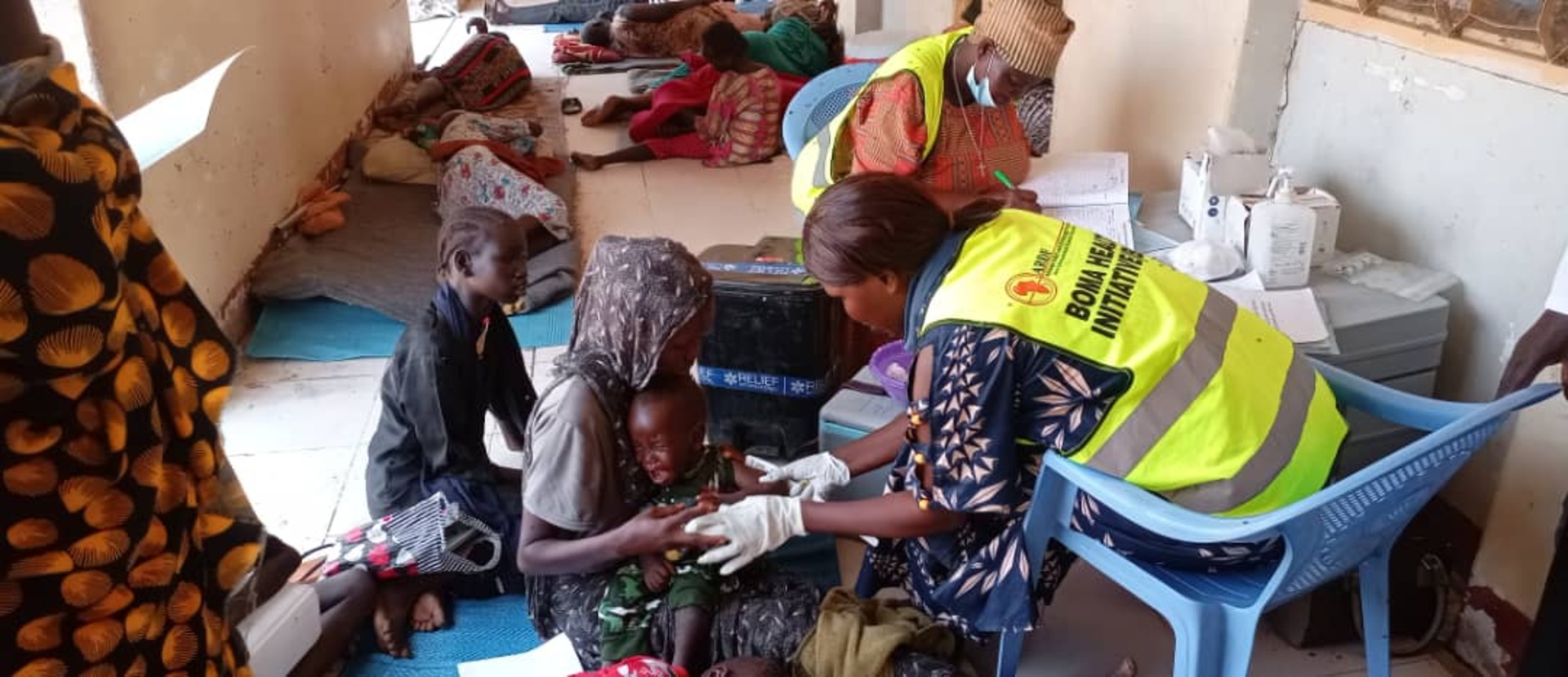a) Health work forces, including recruiting qualified and skilled health workers for the
provision of quality health care services in the supported health facilities.
b) child health services including integrated management of neonatal and childhood
illness (IMNCI), health promotion, vitamin A supplementation and Deworming,
routine immunization, Nutrition screening and treatment, awareness on infant
young child feeding (IYCF) practices, and LLINs distribution.
c) Maternal Health care services including antenatal care (ANC), skilled delivery
(SBA), Postnatal care, Prevention of mother to child transmission of HIV (PMTCT)
services, Family planning, Basic Emergency obstetric and newborn care
(BEmONC), comprehensive emergency obstetric and newborn care (CEmONC),
services addressing sexual and gender-based violence,
d) Provision of essential medicine to the facilities, Bomas and Mobile medical units.
ARDF ensures timely last Mile Distribution and management of essential
medicines and supplies in the Counties, overhauling storage facilities and de-
junking of expire drugs.
e) Strengthening disease surveillance and outbreak response, and referral system in
each County.
f) Quality improvement such as supportive supervision, improving infection
prevention and control in the facilities, maintaining facilities clean, proper waste
management and imposing environmental safety measures and capacity building
of health providers; integrated management of neonatal and childhood illnesses
(IMNCI), immunization in practice (IIP), Infection prevention and control (IPC),
BEmONC/CEmONC, Rational drug use and pharmaceutical management,
PMTCT, CMR, IYCF, CMAM, and Family Planning.
g) Strengthen the Coordination and leadership role of CHD and state ministry of
health (SMOH) through prompt payment of incentives to the health workers, CHD
and SMOH officials, monthly coordination meetings at the County Level, quarterly
review meeting at state level, Monthly in-charges review meeting, and provision of
internet in all CHD, PHCCs and PHCUs. In addition, ARDF integrate its key
program staff with CHD, ensuing they work within CHD premises, sharing the
same office to improve knowledge transfer, facilitating the transitioning of the
health system to the responsibility of CHD. CHD officials are capacitated on
leadership and management, human resource for health, pharmaceutical stock
management, and supportive supervision. At the state level, ARDF Co-locate its
key staff to improve coordination and collaboration.
h) ARDF work with CHD to ensure services reach communities at grassroot level
through Boma health initiative (BHI) program focusing on management of
childhood morbidities including Malaria, Pneumonia and Diarrhea. Boma Health
workers (BHWs) and BHI supervisors are established and supported with
monthly incentives, essential drugs, supplies, community health management
information system tools (CHMIS), and train on BHI phase 1, 2 and 3 to provide
community health care services as per BHI guidelines. ARDF and CHD will
undertake monthly supportive supervision to BHWs.
i) Innovatively, ARDF uses its participatory approach by engaging community
stakeholders, youths, religious leaders, and women leaders etc. on community
dialogue meetings, discussing issues that create health care demand and peace
building to allow health services provided to the population without interruption.
j) ARDF regularly conduct mobile medical clinic to reach hard-to-reach
communities.
k) ARDF and CHD report health services through DHIS2 and Kobo Collect online
electronic technologies for reporting health services monthly. Health workers are
provided with HMIS tools and trained on how to use them for effective data
recording and generation of reports in health facilities.
